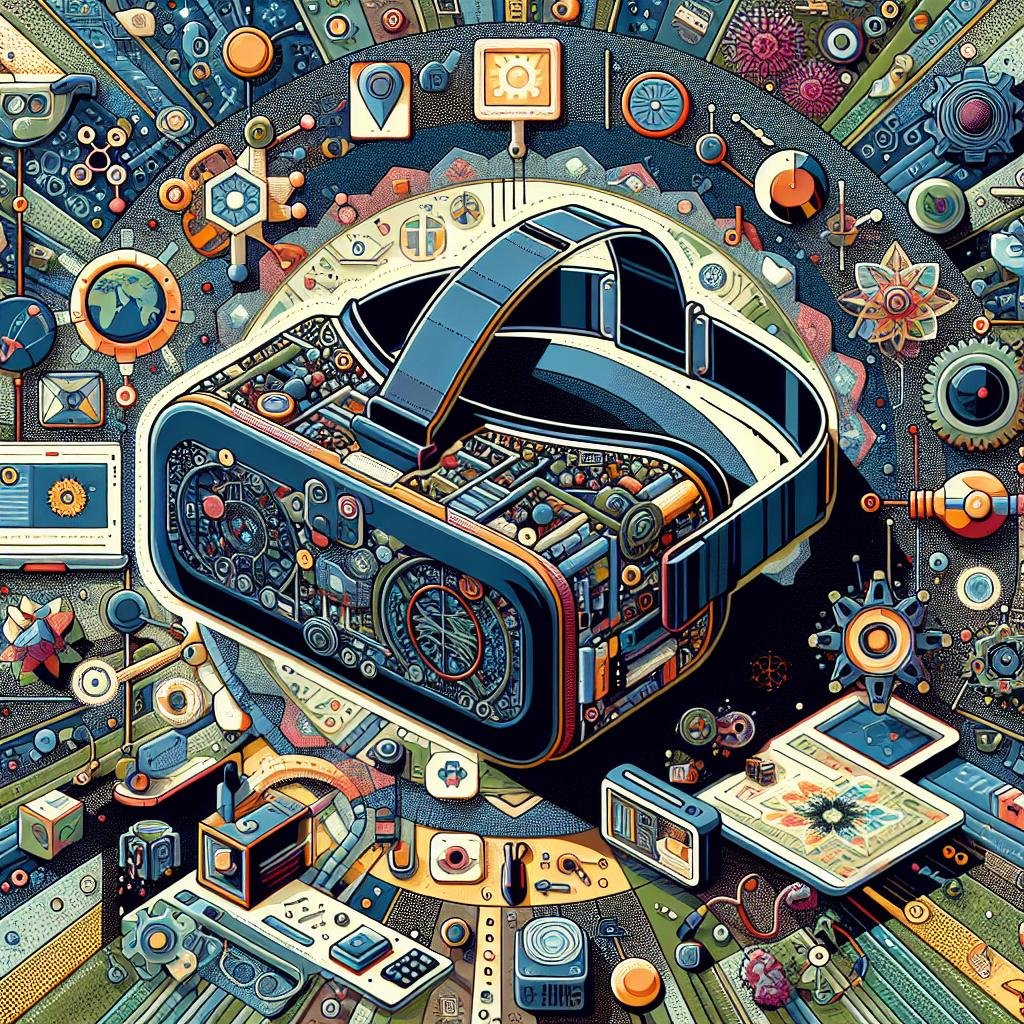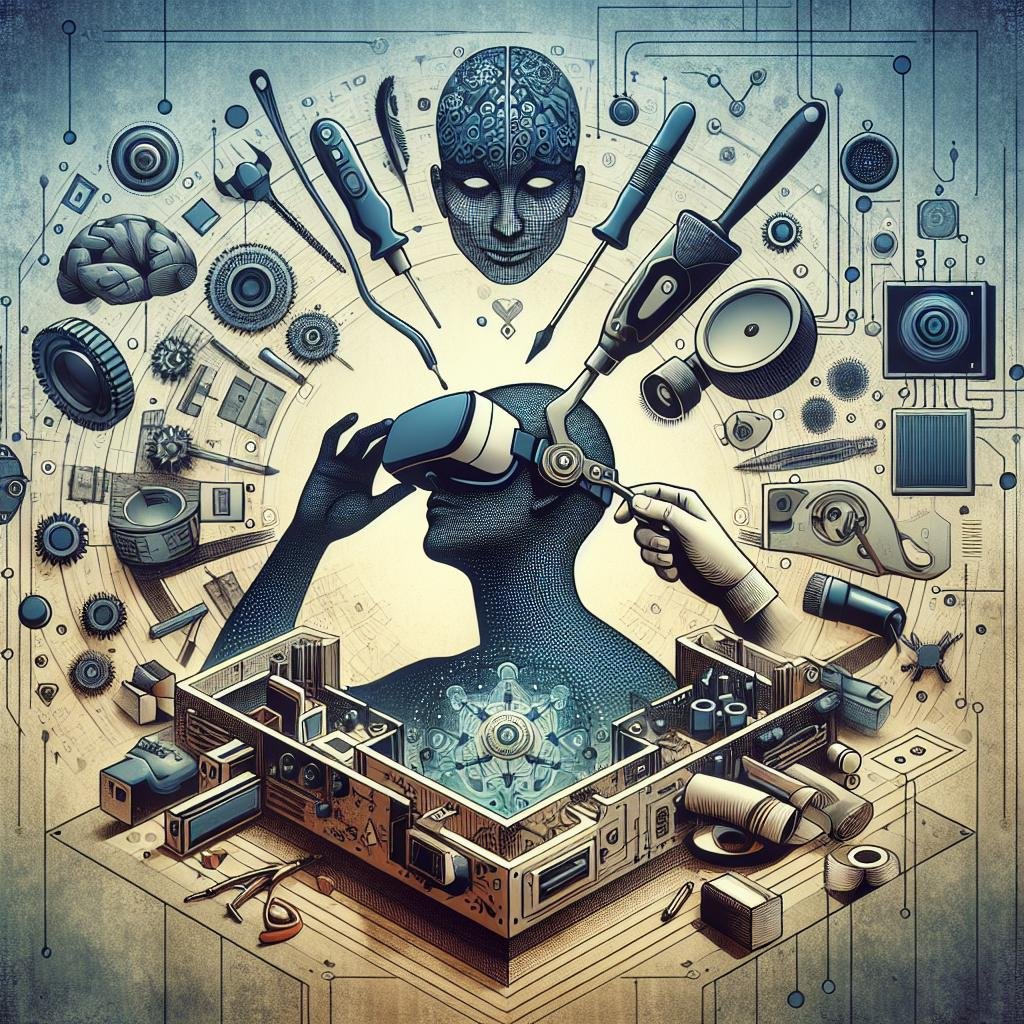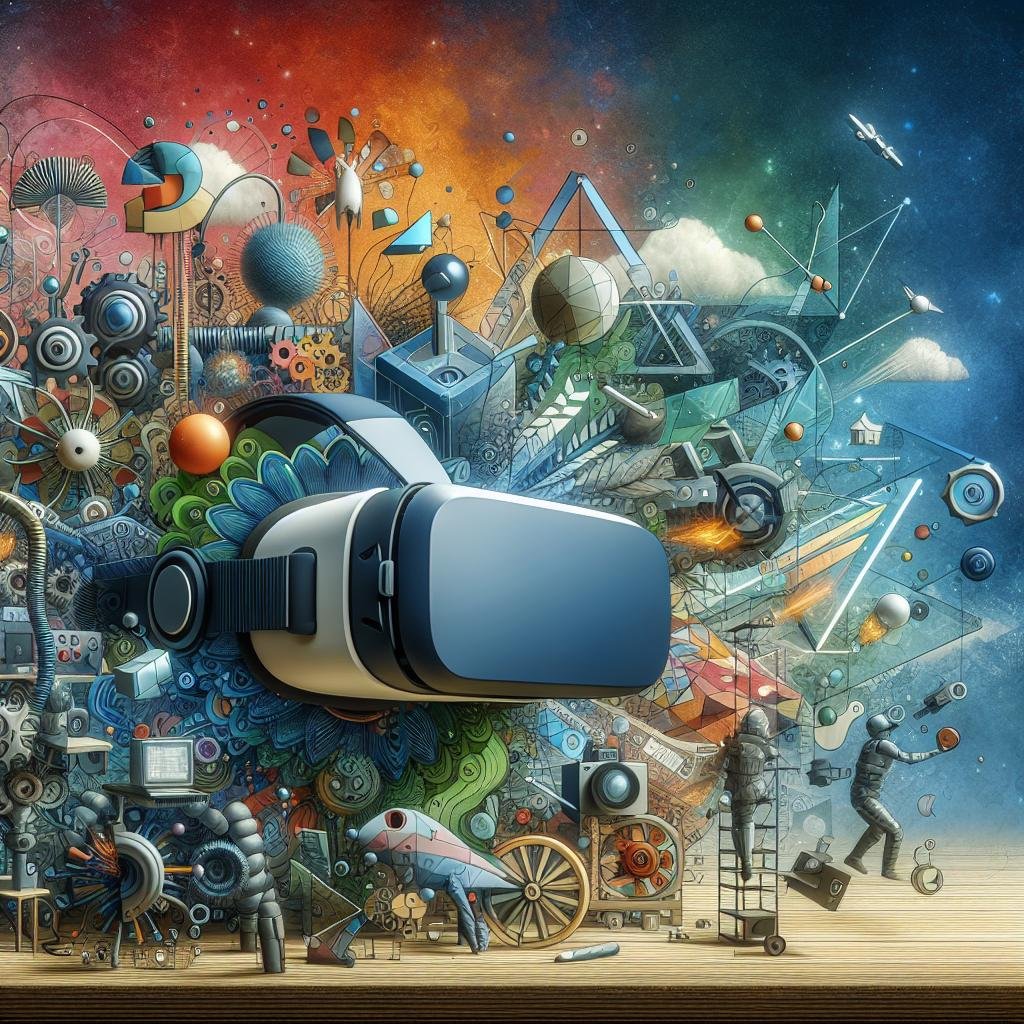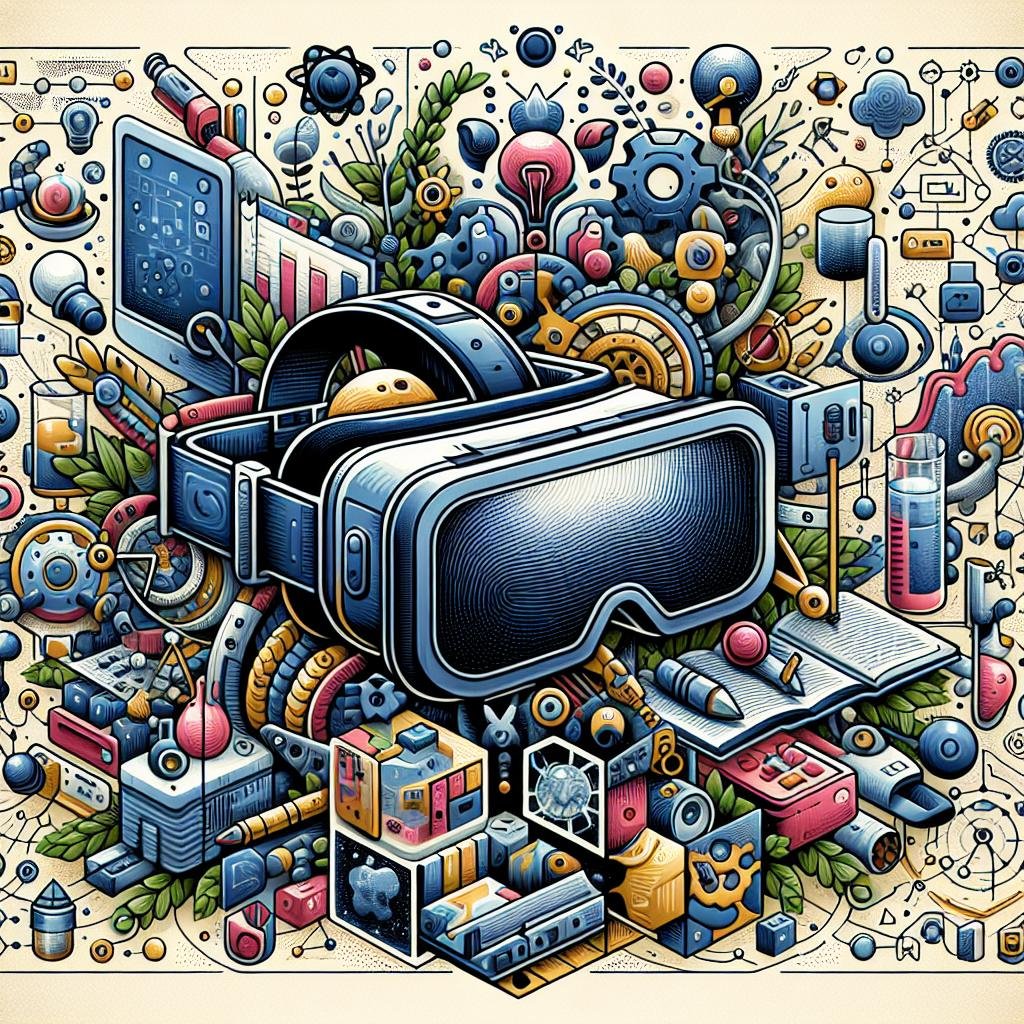How too Build a VR Headset for PC: Your Gateway to Virtual Worlds
Welcome to the future of immersive technology! Whether you’re a tech enthusiast, a DIY hobbyist, or just an adventurous explorer of virtual worlds, crafting your own virtual reality gear opens up a world of possibilities. In this article, we’ll guide you through the fascinating journey of ”how to build a VR headset for PC.” Picture this: diving into a pixel-perfect ocean, standing on the edge of a digital skyscraper, or battling dragons from the comfort of your living room. Building your own VR headset not only saves you money but also offers a deep dive into the mechanics of VR technology, providing insights and the ultimate personalized experience.So, grab your toolkit and curiosity as we embark on this exciting adventure together!
Building your Own VR Headset for PC: A Creative Journey
Creating a DIY VR experience
Embarking on the journey to make your own virtual reality headset can be an exciting and fulfilling project. You’ll need a sprinkle of creativity, a touch of tech-savvy, and a dose of patience. Begin by gathering accessible materials; a pair of lenses, something to act as a head strap, foam for comfort, and an enclosure for your smartphone or other display. Ensure that the materials are adjustable and pleasant to wear for extended periods.
another crucial step involves the software aspect. Not only must you consider building the physical aspect, but you would also need to dive deep into the realms of applications and tools that will enable your DIY headset to communicate with your PC. Look for open-source software that matches your needs,and explore an array of platforms to bring your virtual environment to life. Create a small list or table of essential components and software, like the one below, to guide you through the creation process:
- Adjustable Lenses: Essential for a clear view.
- Display Holder: A secure place for your screen.
- head Strap: Comfort is key.
- VR Software: Open-source examples include SteamVR and Trinus VR.
| Component | Description |
|---|---|
| Head Strap | Reusable strap from sports gear |
| Lenses | Improvised from old glasses |
| software | Utilize SteamVR for PC connection |

Exploring Essential Components: Crafting the Heart of Your VR Experience
Crafting a custom VR headset for PC starts with understanding its core components. At the heart of your VR project lies a combination of displays, lenses, and motion sensors that ensure a seamless and immersive experience. It all begins with selecting the right display. you would need a high-resolution screen — consider OLED or LCD panels, known for offering vibrant colors and crisp visuals. Beyond display, the lenses play a pivotal role in enhancing the field of view and image clarity. Fresnel lenses are a popular choice because of their thin, lightweight design which minimizes distortion.The next vital step is incorporating motion tracking technology. Implementing proper gyroscopic sensors and accelerometers ensures that each head movement is replicated instantly within the virtual environment. These components work harmoniously to create that portal to otherworldly realms we all seek. Here’s a speedy recap of what’s essential:
- Display Technology: OLED or LCD
- Lens Type: Fresnel lenses
- motion Sensors: Gyroscopic sensors, Accelerometers
For an at-a-glance view of these components, check out this table:
| Component | Description |
|---|---|
| Display | High-resolution OLED or LCD screens |
| Lenses | Fresnel lenses for wider field of view |
| Motion Sensors | Includes Gyroscopes and Accelerometers |

Step-by-Step Assembly: Bringing Your DIY VR Headset to Life
Gather Your Materials and Tools
Embarking on this exciting DIY journey? Before diving into the construction phase, ensure you have all your materials ready. You will need:
- Cardboard or plastic housing: This will form the frame of your headset.
- Two biconvex lenses: Approximately 40mm in diameter for a clear view of the screen.
- Nylon straps: To keep the headset comfortably secured to your head.
- Foam padding: For comfort where the headset meets your face.
- Velcro strips: To hold everything snugly in place.
- Scissors,glue,and a hobby knife: Essential tools for assembly.
Take care to organize everything beforehand, as it’s much easier to bring your DIY VR headset to life with all components within reach. Remember,you’ll be working with delicate lenses,so handle them with care to avoid scratches.
Bringing It All Together: The Assembly Process
Now that you’re ready to assemble,it’s time to bring this vision to life with step-by-step precision. Start by crafting the frame; carefully cut the cardboard or plastic according to your template. Use the hobby knife for clean edges and the glue to secure the structure. Align the lenses accurately at the center to avoid distortion—precision is your best friend here. Once the frame is complete, attach the foam padding for comfort, making sure it’s evenly distributed.
The final steps involve securing the nylon straps and attaching the Velcro strips for an adjustable fit. Test the fit each time you make an adjustment, ensuring it sits comfortably on different head sizes. As a handy reference, here’s a quick table on component placement:
| Component | Placement |
|---|---|
| Lenses | Centered within the frame |
| Foam Padding | Edges of the frame |
| Nylon Straps | Attached through side slots |
| Velcro Strips | On straps and frame back |
If you’re meticulous in your assembly, your custom VR headset will not only work smoothly but also offer hours of immersive fun. So, grab those tools and let your adventure begin! This hands-on experience isn’t just about building a VR headset for PC—it’s about enjoying the creative process itself.

Troubleshooting and Tips: Perfecting Your Customized VR Adventure
Embarking on the journey to build a VR headset for PC is both thrilling and challenging. Encountering hurdles is part of the process, but with the right guidance, they can be easily overcome. If your display seems to be out of sync, it may help to check whether your graphics card drivers are up-to-date. In case of ghosting or blurring images, ensure your headset’s lenses are properly calibrated. Immersive sound can vastly enhance your experience, so double-check if your audio drivers need updates or if the cables are securely plugged in.For comfort, consider using adjustable straps or padding to fit the contours of your face perfectly. Remember, the goal is a seamless experience, devoid of distractions.
- Update your graphics and audio drivers.
- Calibrate lenses for the best image quality.
- Adjust head straps for a snug fit.
- Secure all cables properly.
Customizing your VR environment further elevates the personalization of your adventure. Explore various software options that allow tweaking of virtual spaces or experiment with different plug-ins and mods to enhance your VR journey. To combat overheating,consider installing small fans around your setup or using a thermal pad to dissipate heat effectively. If you’re experiencing tracking issues, the placement of sensors can be crucial; they should always have a direct line of sight. Crafting your perfect VR adventure is both a systematic and creative endeavor—don’t hesitate to play around with different configurations until you hit that sweet spot of immersion.
| Issue | Solution |
|---|---|
| Display Out of Sync | Update graphics Drivers |
| Ghosting/Blurring | Calibrate Lenses |
| overheating | Use Fans or Thermal Pads |
| Tracking Issues | Reposition Sensors |
Q&A
Q&A: How to Build a VR Headset for PC
Q1: Why would I want to build my own VR headset for PC rather of buying one?
A1: Great question! Building your own VR headset can be an amazing journey of discovery and creativity. It offers you the adaptability to personalize your VR experience, understand the inner workings of the technology, and potentially save some money. Plus, there’s an exhilarating sense of accomplishment that comes from using a device you built with your own two hands!
Q2: What basic materials will I need to get started?
A2: Ah, the essentials! You’ll need a pair of lenses (biconvex ones work great), an enclosure or headset frame, a screen (a high-resolution smartphone display can work wonders), sensors (like gyroscopes and accelerometers), and some form of input like a game controller. Don’t forget the comfort elements, like foam padding and adjustable straps. You can also look for 3D printable designs if you’re crafty and have access to a 3D printer.
Q3: How crucial is the screen resolution and refresh rate?
A3: Extremely important! The resolution and refresh rate are critical for an immersive and smooth VR experience. A higher resolution means clearer visuals, which is crucial as the screen is so close to your eyes. A high refresh rate (ideally 90 Hz and above) minimizes motion blur and reduces motion sickness, ensuring the virtual world feels as real as possible.
Q4: Can you walk me through a simple process of assembling the headset?
A4: Of course! Let’s keep it breezy. First, secure the screen inside your headset frame and attach the lenses in front of it, making sure they’re adjustable for different focal lengths. Next,add your sensors to track head movement,and connect everything to a processing unit,like a microcontroller,which interfaces with your PC. Finish it off with padding and straps to ensure comfort during those epic virtual adventures!
Q5: How do I connect my DIY VR headset to my PC?
A5: Connecting your headset to the PC is all about ensuring compatibility. You’ll need a driver or software to translate the headset’s sensor data into input the PC can understand. this frequently enough involves using software libraries designed for VR. For display, use HDMI or USB-C to connect to your graphics card. calibrate your setup using VR software to adjust the settings until everything runs smoothly.
Q6: Any tips for making the experience more comfortable and immersive?
A6: Absolutely! Comfort is key. Make sure the headset is easy to wear, with all weight evenly distributed to avoid pressure and fatigue. use breathable padding materials and ergonomic straps. On the tech side, maximize your graphics settings and ensure your PC meets the VR’s performance requirements for the best immersive experience.Don’t forget to take regular breaks to give your eyes and mind a rest!
Q7: What safety precautions should I keep in mind?
A7: Safety first, always! Ensure that the materials you use are skin-kind to avoid irritation. Keep wires secure and out of the way to prevent tripping or accidents. Also, work in a spacious area to safely move around. use recommended screen brightness settings to protect your eyes, and remember to stay seated during intense experiences if standing isn’t necessary.
Remember, building your own VR headset is an adventurous project that takes patience and enthusiasm. Embrace the process, and you’ll not only have a bespoke VR headset but also stories to tell about your creative journey. Enjoy exploring virtual worlds with your new, hand-crafted device!
The Way Forward
As we pull the curtain down on this virtual journey, remember that crafting your own VR headset is much like stepping into a world limited only by your creativity and tinkering skills. You’ve ventured through the landscape of circuit boards and lenses, navigated the world of software and drivers, and discovered the intricate dance of sensors and visuals that bring new realms to life.
Whether you’re aiming to explore far-off galaxies, embark on daring adventures, or simply create a space where your dreams know no boundaries, the power is now in your hands—quite literally. Your DIY VR headset is more than just a gadget; it’s a portal to myriad experiences waiting to be unleashed.
As you switch on your headset and take in the fruits of your labor, let your curiosity guide you through the boundless expanses of virtual reality. Who knows what wonders you’ll encounter, what worlds you will create, or what horizons you will broaden?
So, gear up, dive in, and explore the limitless possibilities. And remember, while this adventure might blend pixels with reality, the joy of crafting something from the ground up is as real as it gets. happy building, and even happier exploring!

